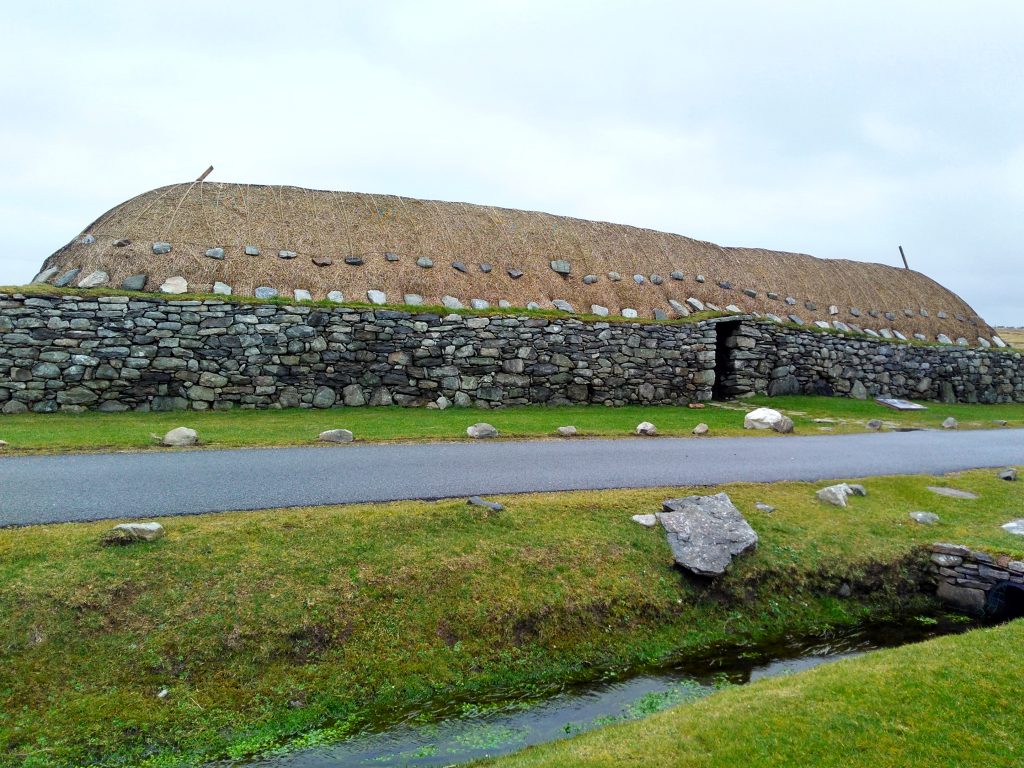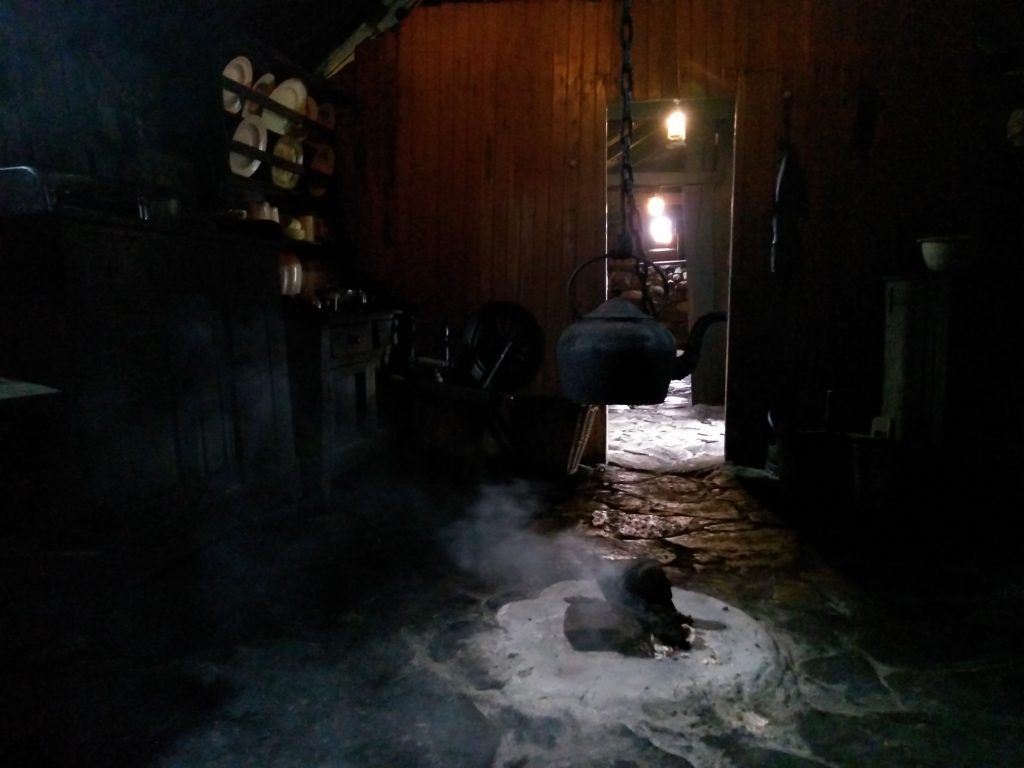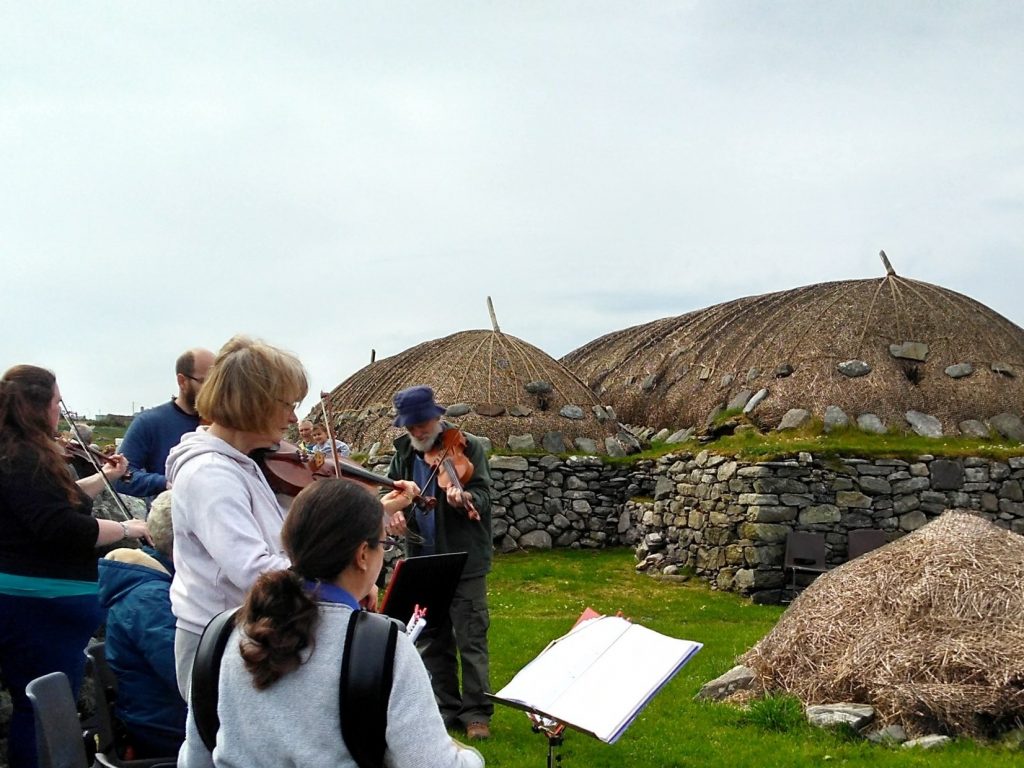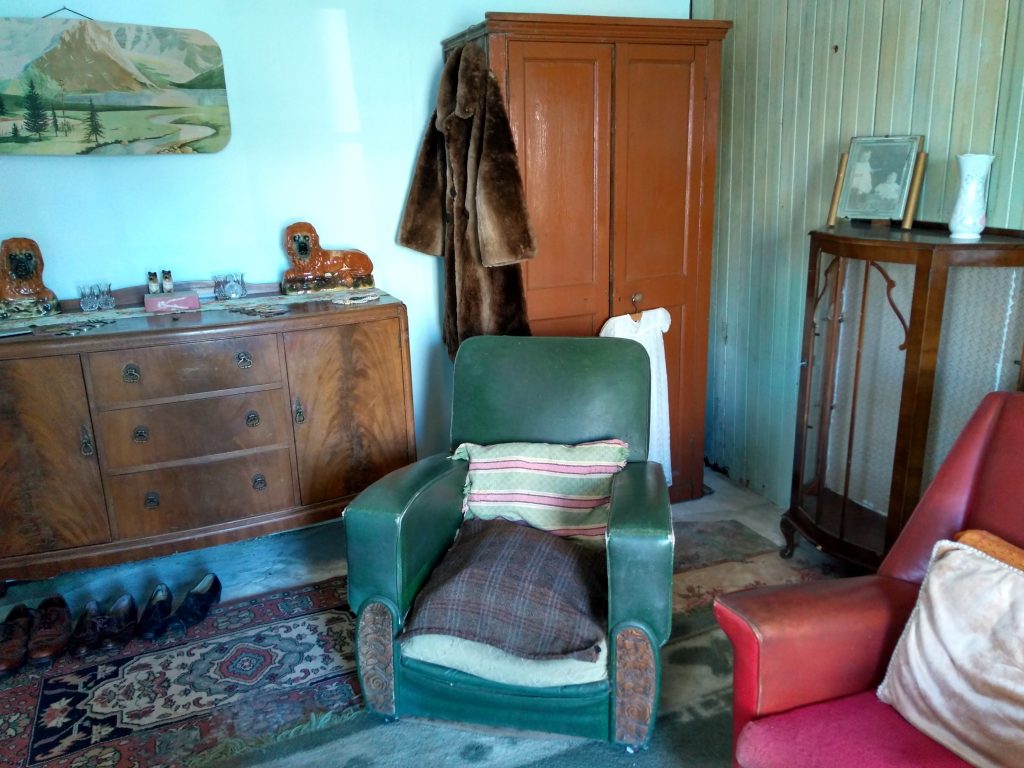The Site:
The Arnol Blackhouse site is located in a rural, crofting settlement in the Outer Hebrides. It consists of conserved and ruined 19th- and 20th-century vernacular housing (scheduled monument SM90022) and is owned and managed directly by Historic Environment Scotland as a ticketed visitor attraction.
The site is staffed year round. There has been some community engagement, particularly with regard to conservation, and educational programmes. The interpretation highlights links to traditional skills, crofting practices, and Gaelic heritage.
The Approach:
This was an extended study using multiple participatory and co-creative methods. It was initially proposed as a co-designed study, commencing with a focus group discussion; however, that approach had to be modified due to delays in identifying and engaging with communities.
The research was conducted primarily during two fieldtrips to Lewis, 1 week in March and 3 weeks in May/June 2019. In addition, approximately 1 week of full-time equivellent was spent on preparatory work, liaison and meetings in the preceding months.
During the fieldtrips, 1-2 hours were spent on site 3-4 times a week, plus off-site activities, such as interviews. The site was unexpectedly closed to visitors during the March visit, but in May/June a notice was posted in the visitor centre advising that the research was taking place.
Behaviour mapping was conducted for around 1.5 hours during two visits. From outside the buildings it was not possible to see into the houses and vice versa, so observation was conducted from multiple points and while moving around the site.
Time spent on site and observing or mapping how people engaged with the space informed the trialling of multi-sensory or embodied ways of knowing. This method was trialled for about 1 hour during two visits and focused primarily on the conserved blackhouse (interior and exterior).
Observation also took place at a public event, when the research coincided with a community fiddle and accordion concert held on site, and a community coffee morning, attended with the school pupils involved in creative activities (see below).
Semi-structured interviews (nine respondents) were conducted with residents of Arnol, representatives of community organisations, and heritage professionals. Interviews were conducted in-person and took place either in people’s offices, homes, or the steward’s office at the Arnol Blackhouse site. They were mostly one-on-one, except in two cases where another family member was present.
Creative engagements with place were observed and discussed during other research activities, including the community concert.
- Consideration was given to engaging participants through the digital creation of virtual or 3D printed models of objects from the collection. Enquiries were made with the collection manager, but unfortunately the requirement for a conservator to be present during the activity could not be met within the research context.
- Images of some of the objects were used in a future visioning activity conducted with pupils at the local primary school. This was a one-day classroom-based activity; however, most of the children had previously visited the site and they discussed their impressions and memories, as well as responses to the materials shared on the day. The activity used historic films, pictures and postcards related to crofting and life on Lewis over the last hundred years as inputs to a group discussion on how places and objects are used to tell stories. The children were then asked to design a ‘postcard to the future’, drawing something of significance to them on the front and writing a message to a future recipient on the back (eight included in the study). These postcards were shared with parents and older residents at a community coffee morning later the same week.
The participatory research activities were complemented by a document review of records relating to and held at the site and monitoring of public participatory media (Facebook and Instagram).
Discussion on the draft site report took place over email and the final report was discussed with Historic Environment Scotland, with a view to the social values identified being incorporated into the Statement of Significance for the site.
The settlement of Arnol has moved three times in the last 250-300 years, from the coast up to the main road where it is currently positioned. The policies and hardships that resulted in the relocation of the village also led to the movement of its people, as they were driven to seek work and opportunities elsewhere. This reality, of temporary or more permanent migration, remains part of island life today; meaning that communities of interest and identity may be widely dispersed and ‘resident’ communities are more dynamic than might otherwise be assumed.
The site was a family home (until it was taken into State Care in 1965) and is now a place of work, education and leisure. Communities of interest, identity and geography identified during this study were:
- Local children
- Long-term residents
- More recent/returning residents
- Descendants of present residents
- Past residents (still on Lewis or further afield)
- Descendants of historic Arnol or Lewis residents
- Members of the family
- School children from the wider area
- Volunteers and Stewards (past and present)
- Members of the Estate Trust
- Croft tenants
- Gaelic speakers
- Artists, musicians and storytellers
- Traditional crafters (e.g. thatchers)
This study found that the site is socially and culturally embedded in the community life of multiple groups.
- Responses to the site reflect a mixture of connections related to its current form/function, what it once was, and what it represents. These responses depend in part on how people first came to know the site, which has a generational dimension.
- The Arnol Blackhouse was a family home within living memory and that personal connection is significant to how it is valued.
- The site has an on-going social presence in Arnol village life as a place of activity and employment.
The site is intimately connected with the wider landscape and with crofting life, which is expressed as an on-going, future-orientated practice, and is part of a living culture.
- Although the site incorporates multiple buildings, constructed in different periods, the blackhouse at number 42 is the focus for most people’s attention and expressions of attachment.
- The site provides a multi-sensory, interactive experience of ‘home’ and contextualises important aspects of contemporary life on Lewis.
- The site is an educational resource, in particular for Gaelic language and culture, and has the potential to benefit greater numbers of young people in this regard, from across Lewis and beyond.
- Working with young people is an opportunity to build inter-generational understanding and a potential response to the progressive loss of living memory and the impact this could have on community practices, skills and knowledge, as well as future interpretation.
There was a general feeling across respondents that the blackhouse is something unique. There are a number of contextual factors that suggest a level of consultation and sensitivity is required in managing the site beyond that which might otherwise be considered sufficient for a property in state care. There is a reasonable expectation of greater transparency and communication regarding site management, in so far as decisions have the potential to impact either specific individuals, communities or the wider area.

Exterior of the conserved blackhouse 
Interior of the conserved blackhouse

Concert in the stackyard 
Interior of the whitehouse